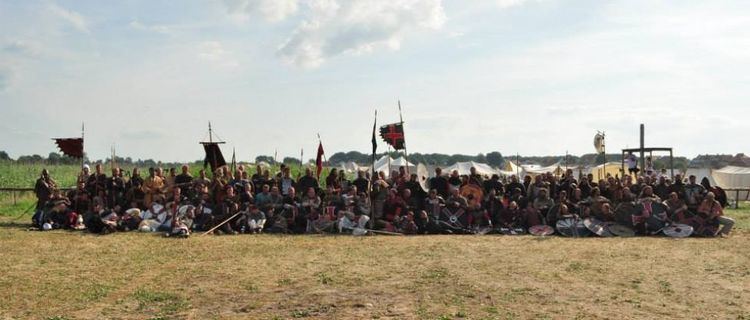 | ||
Percival jomsborg
Jomsborg or Jómsborg (German: Jomsburg) was a semi-legendary Viking stronghold at the southern coast of the Baltic Sea (medieval Wendland, modern Pomerania), that existed between the 960s and 1043. Its inhabitants were known as Jomsvikings. Jomsborg's exact location, or its existence, has not yet been established, though it is often maintained that Jomsborg was somewhere on the islands of the Oder estuary. Lauritz Weibull dismissed it as a legend.
Contents
- Percival jomsborg
- Location
- The fortress
- Jomsvikings
- The Curmsun Disc
- Historical events
- Related Reading
- References
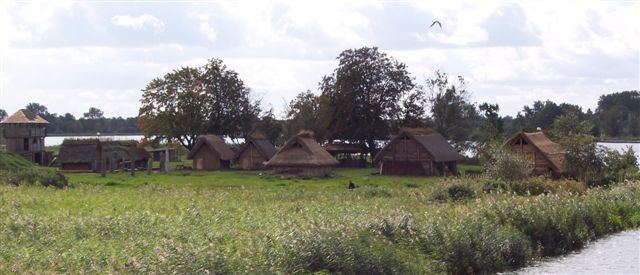
Location

Jomsborg is often thought to be identical with the present-day town of Wolin (also Wollin) on the southeastern tip of the isle of Wolin, probably located at Silberberg hill north of the town. In the Early Middle Ages, modern Wolin was the site of a multi-ethnic emporium (then known as Jumne or Julin). The Nordic sagas use "Jómsborg" exclusively, while medieval German histories use "Jumne" or "Julin", with the alternate names, some of which may be spelling variants, "vimne", "uimne", "Jumneta", "Juminem", "Julinum", "uineta", "Vineta" and "Vinneta".

In 1931/32, Pomeranian historian Adolf Hofmeister (1883-1956) suggested, through comparison of the events reported by the different chronicles, that all these terms describe the same place, which is at or near the modern town of Wolin. However, this is by no means universally accepted; Professor and historian Steven Fanning writes: "The Trelleborg-type fortresses of Denmark have been taken to be actual examples of Jómsborg-style camps of such warriors and Wolin in Poland was believed to be the actual Jómsborg. However, all such attempts to locate Jómsborg or encampments of the Jómvikings have failed, leading many to doubt that Jómvikings ever existed outside of literature." According to Władysław Filipowiak there are several dated sources which attest to the presence of a company of armed Vikings at the end of the 10th century in Wolin, who may have been installed there as mercenaries by the Polish king Bolesław Chrobry.
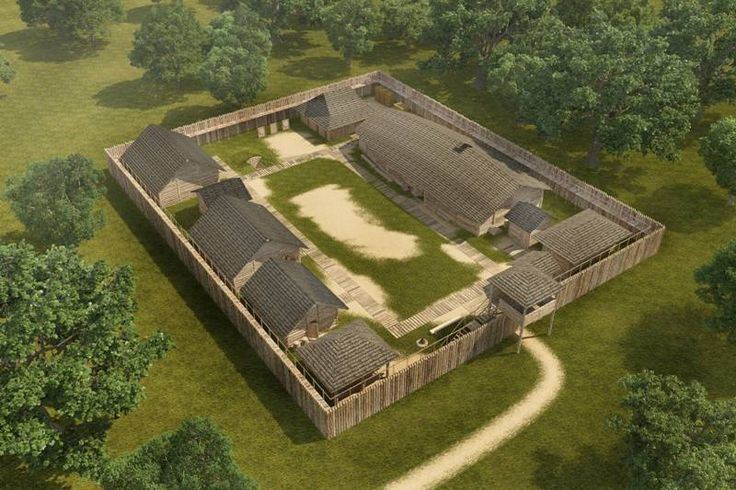
Other theories see Jomsborg in the northwest of nearby Usedom island, on lands now submerged. The small islands in this area are remnants of a long stretch of land between Usedom and Rügen, which fell victim to storm floods in the early 14th century. Suspected locations in this area are the Veritas grounds between the petty islands of Ruden and Greifswalder Oie, and the Peenemünde shoals. While Viking Age jewelry has been found at the site, archaeological evaluation of these theories has not yet been possible.
The fortress
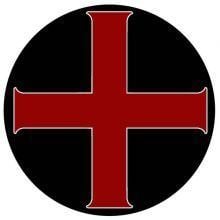
According to the Knytlingasaga and Fagrskinna, Jomsborg was built by the Danish king Harold Bluetooth (910-985/86) in the 960s. The Jomsvikinga Saga mentions Danish Viking Palnatoki as its founder.
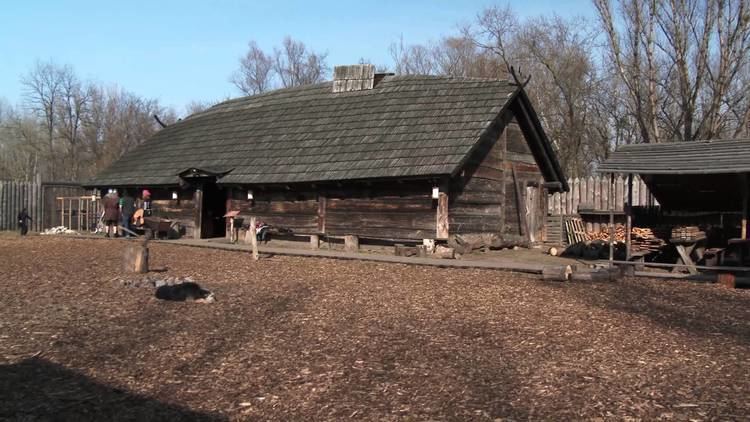
In medieval records, Jomsborg is described as a fortress with a harbour. The harbour was overseen by a stone tower mounted with catapults, built on an arch spanning over the harbour entrance which could be closed by an iron gate. According to the oldest records, the harbour had space for three ships, later records give a capacity of up to 360 ships.
According to the Heimskringla, Jomsborg was destroyed in 1043 by Dani-Norwegian king Magnus the Good. The fortress was burned down, and many of the inhabitants were killed.
Jomsvikings
The Jomsborg Vikings (Jomsvikings) were composed of selected warriors, adhered to a special codex, and were loyal only to their leader. Most records list as jarl of Jomsborg, Sigvald(i), son of petty king Strut-Harald of then Danish Scania. Sigvald died some time before 1010. In 1009, many Jomsvikings left Jomsborg and followed Sigvald's brothers Herring and Thorkell the Tall to England, where they became the nucleus of Cnut the Great's Thingmen or Huscarls.
The Curmsun Disc
A golden disc bearing the name of Harald Bluetooth and Jomsborg appeared in Sweden in autumn 2014. The disc, also called the Curmsun Disc, is made of high gold content and has a weight of 25,23 gram. On the obverse there is a Latin inscription and on the reverse there is a Latin cross with four dots surrounded by an octagonal ridge. The inscription reads: "+ARALD CVRMSVN+REX AD TANER+SCON+JVMN+CIV ALDIN+" and translates as "Harald Gormsson king of Danes, Scania, Jomsborg, town Aldinburg".
It is assumed that the disc was a part of a Viking hoard found in 1840 in the Polish village Wiejkowo near the town of Wolin. The disc was rediscovered in 2014 by an eleven year old schoolgirl who found it in an old casket and then brought it to school.
The Curmsun Disc underwent metallurgical analysis in June 18, 2015 at the University of Lund in Sweden. The analysis showed that the alloy has a gold content ranging between 83,3-92,8%.
According to a theory in an article in the magazine Siden Saxo (No. 4-2015) written by Danish editor and archivist Steffen Harpsøe the disc may have been created around year 1100 as a symbolic ornament by missionaries around Jomsborg and Wiejkowo. There is a possibility that the missionaries canonized Harald Bluetooth according to the theory in the article. S. Harpsøe assumes that the letter J in the inscription JVMN is a real J and not the letter I and that the inscription "JVMN CIV ALDIN" should be interpreted as “Jomsborg in the bishopric Oldenburg”. These assumptions result in a dating interval of the Curmsun Disc between 1050-1125 as the letter J does not exist in written language before it shows up in Middle High German by year 1050 and as Jomsborg became an own bishopric in 1125.
Swedish archeologist Sven Rosborn has a theory where the disc could have been created by a Frankish monk in connection with Harald Bluetooth´s death in Jomsborg.
